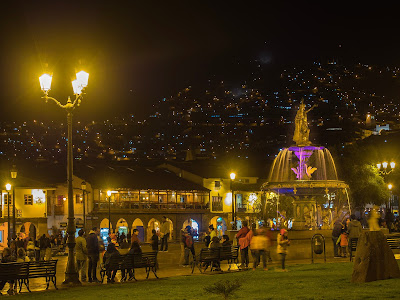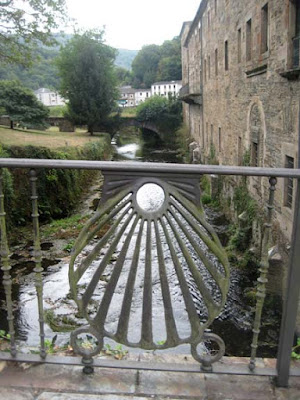 |
| Half Dome, Yosemite National Park, California |
Yosemite National Park in California is perhaps the most spectacular of all our nation’s parks and one of my favorites. With its massive rock formations, rushing rivers, tumbling waterfalls, and thick forests, it is hard to beat. I have been there numerous times, and it never fails to amaze and inspire.
 |
| Picnic area at Wawona near the Pioneer Yosemite History Center |
Two weeks ago, Art and I were there for the weekend, spending most of our time at Wawona, near the southern entrance to the park. We did not go down into Yosemite Valley, which is always the most crowded place in the park. The weather was warm and sunny and the leaves on the aspens and oaks had turned yellow, perfect for sightseeing along Glacier Point Road, with its views into Yosemite Valley and of Half Dome, and for hiking along the Merced River at Wawona.
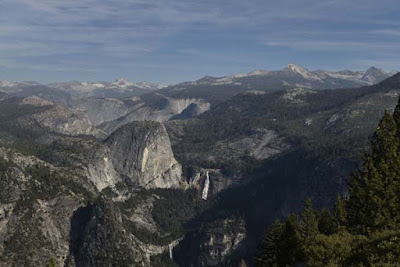 |
| View of Nevada Falls and Vernal Falls from Washburn Point on the Glacier Point Road |
On Saturday we started with a picnic lunch overlooking the South Fork of the Merced River near the Pioneer Yosemite History Center. We then continued down Highway 41 to Glacier Point road, a twisty mountain road that dead ends at Glacier Point. We had to wait about twenty minutes to get to the parking lot, but the wait was worth it.
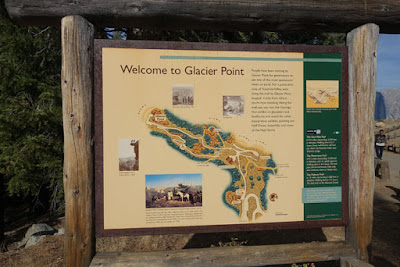 |
| Map of trails and viewing areas at Glacier Point |
From the viewing area we gazed at Half Dome and the peaks of the Sierras beyond, peered over the railing to see tiny cars and buildings in the valley below, and read about the giant glaciers that carved the valley in the geology exhibit. That evening we ate dinner at the historic Big Trees Lodge (formerly the Wawona Hotel).
 |
| Chilnualna Falls |
The next morning we returned to Wawona from our bed and breakfast in Oaklhurst and drove to the parking area for Chilnualna Falls where we followed the path for the short hike to the bottom of the falls. After returning to the main path, we continued to the Swinging Bridge, a half-hour walk through a forested valley to a narrow footbridge over the North Fork of the Merced River. Although we encountered a few other hikers along the way, most of the time we were alone with nature.
 |
| Swinging bridge over the North Fork of the Merced River |
Our last stop after leaving the park and eating lunch at the Tenaya Lodge Resort in Fish Camp, was at the Sugar Pine Railroad, where there is a small but interesting museum focusing on the days when the train was used to transport lumber.
The purpose of our trip to Yosemite was to make preparations for a family reunion we plan to have there next June staying at The Redwoods in Yosemite. We look forward to our return!
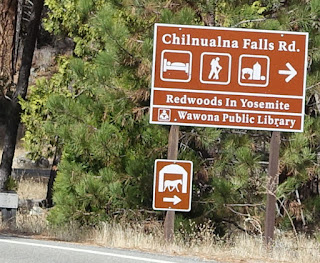 |
| Turnoff for Chilnualna Falls from Highway 41 |
For the weekend we stayed at the Hounds Tooth Inn, a bed and breakfast in Oakhurst, 22 miles from the the park, about a forty minute drive to Wawona.
For information about visiting Yosemite National Park, go to the park website.
Note: The Mariposa Grove of giant sequoia trees near the Wawona entrance to Yosemite is currently closed for restoration. It is expected to reopen by early summer 2017.




